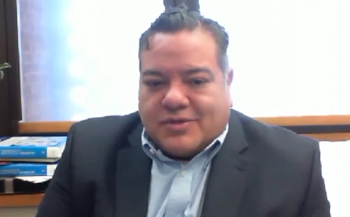
Advancements in Single-Particle ICP-TOF-MS Analysis
At the Winter Conference on Plasma Spectrochemistry, Alexander Gundlach-Graham of Iowa State University delivered a talk on how size distributions and measurement statistics impact single-particle inductively coupled plasma time of flight mass spectrometry (ICP-TOFMS).
At the Winter Conference on Plasma Spectrochemistry, Alexander Gundlach-Graham of Iowa State University delivered a talk on how size distributions and measurement statistics impact single-particle inductively coupled plasma time of flight mass spectrometry (ICP-TOF-MS). The lecture explored how Monte Carlo simulations could be used for single-particle detection. This mathematical technique that uses random sampling to model complex processes.
Monte Carlo simulations can be used to complete tasks that are difficult to do in the laboratory. For example, Gundlach-Graham explained how Monte Carlo simulations could be used to change analyte particle size distribution(1).
His research focused on time-of-flight mass spectrometry (TOF-MS), a technique that detects ions through electron multiplication followed by fast analog-to-digital conversion (ADC) (2).This method is popular because it can extend the range of TOF-MS measurements, particularly for transient analyses (2). However, the fast ADC detection introduces measurement noise inherent to the electron multiplication process (2).
Gundlach-Graham spent a significant amount of time in his talk showing his previous research on the subject. He showed that TOF-MS signals that are acquired with fast ADC follow a compound Poisson distribution, where the Poisson-distributed arrival of ions at the detector is compounded with the response profile of the electron multiplier (1–3).
Gundlach-Graham also discussed how particle-finding accuracy in single-particle ICP-TOF-MS (spICP-TOF-MS) is influenced by responses from the mass-to-charge (m/z)-dependent detector (2). In spICP-TOF-MS, the background signals and the particle signals are differentiated, and the highly time-resolved ion signals are recorded (2).
Through Monte Carlo modeling, Gundlach-Graham demonstrated that when the modeling is coupled with measured m/z-dependent detector responses, Poisson model distributions can be generated that reflect an accurate accounting of signal dispersion (2). It then becomes easy to test the critical values for accuracy. As Gundlach-Graham explained during his talk, Testing the accuracy of the critical values requires an analysis of dissolved element solutions (1,2). By comparing the measured and predicted event rates above the critical value thresholds, the accuracy of the data can be validated (1,2).
The use of m/z-dependent compound Poisson critical values is shown to reduce false-positive particle identifications by one to two orders of magnitude compared to thresholding criteria based on normal or Poisson statistics (2). This improved accuracy and robustness of compound Poisson critical values enable automated multi-element particle finding in spICP-TOF-MS (2).
This article was written with the help of artificial intelligence and has been edited to ensure accuracy and clarity. You can read more about our
References
- Gundlach-Graham, A. How Particle Size Distributions and Measurement Statistics Impact Single-Particle ICP-TOFMS Analyses. Presented at the Winter Conference in Plasma Spectrochemistry, in Tucson, Arizona, January 17th, 2024.
- Gundlach-Graham, A.; Lancaster, R. Mass-Dependent Critical Value Expressions for Particle Finding in Single-Particle ICP-TOFMS. Anal. Chem. 2023, 95 (13), 5618–5626. DOI:
10.1021/acs.analchem.2c05243 - Gundlach-Graham, A.; Hendriks, L.; Mehrabi, K.; Günther, D. Monte Carlo Simulation of Low-Count Signals in Time-of-Flight Mass Spectrometry and Its Application to Single-Particle Detection. Anal. Chem. 2018, 90 (20), 11847–11855. DOI:
10.1021/acs.analchem.8b01551
Newsletter
Get essential updates on the latest spectroscopy technologies, regulatory standards, and best practices—subscribe today to Spectroscopy.




